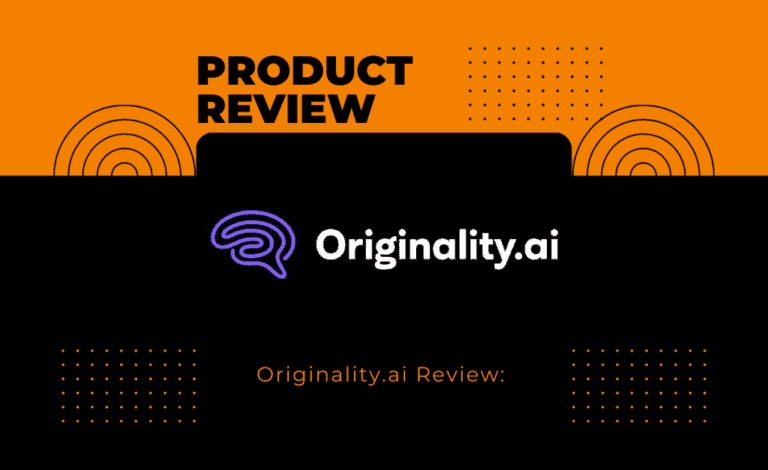
Unveiling Challenges and Limitations of AI Writing Tools

AI writing tools have seen significant advancements in recent years, offering major opportunities, limitations, and concerns. These tools can generate various types of content at a high-quality level, but they cannot produce publish-ready drafts. Human intervention is still necessary to refine and polish the writing. AI writing tools also have limitations in producing factual content and citing the sources of information. It is important to have domain experts verify the accuracy of the outputs.
Additionally, there are challenges in maintaining creativity and originality, reducing reliance on data and statistics, handling the complexity of training and implementation, considering the cost implications for smaller organizations, and addressing ethical considerations. The limitations of AI writing tools include dependency on high-quality data sets, inability to understand context and tone, lack of understanding of cultural nuances, potential biases and stereotypes in the output, and technical complexities in understanding and using the tools.
Despite these limitations and challenges, AI writing tools can still be effectively used by leveraging advanced tools like GetGenie Ai that aim to minimize these issues.

- AI writing tools have significant potential but also limitations and challenges.
- Human intervention is necessary to refine and polish the content generated by AI writing tools.
- Domain experts should verify the accuracy of the outputs from AI writing tools.
- Maintaining creativity and originality is a challenge when relying on AI writing tools.
- Handling the complexity of training and implementation requires expertise.
The Capability and Limitations of AI Writing Tools
While AI writing tools can generate various types of content at a high-quality level, they cannot produce publish-ready drafts. These tools serve as valuable aids in the writing process, but human intervention is crucial to refine and polish the writing before it is ready for publication.
One of the limitations of AI writing tools is their ability to produce factual content and cite sources accurately. Although these tools can generate impressive content, it is essential to have domain experts verify the accuracy of the outputs. This ensures that the information presented is reliable and trustworthy.
In addition to factual accuracy, maintaining creativity and originality is another challenge when using AI writing tools. These tools heavily rely on data and statistics, which can limit the scope of creativity. Human input adds unique perspectives, ideas, and personal touches to the content.
| Limitations of AI Writing Tools | |
|---|---|
| Dependency on high-quality data sets | AI writing tools require access to comprehensive and accurate data to generate meaningful content. |
| Inability to understand context and tone | AI tools may struggle to understand the nuances of context and tone, leading to potential misinterpretations. |
| Lack of understanding of cultural nuances | AI writing tools may overlook cultural differences and fail to adapt the content accordingly. |
| Potential biases and stereotypes in output | Biases and stereotypes can unintentionally be embedded in the output of AI writing tools, requiring human oversight to ensure fairness and inclusivity. |
| Technical complexities in understanding and using the tools | AI writing tools can be complex to navigate and require a deep understanding to maximize their potential. |
Despite these limitations and challenges, AI writing tools can still be effectively used by leveraging more advanced tools like GetGenie Ai. These tools are designed to minimize the issues mentioned above, making them a valuable asset in writing. By combining the capabilities of AI with human expertise, we can achieve the best of both worlds and produce exceptional written content.

Challenges in Maintaining Creativity and Originality
One of the challenges of using AI writing tools is the difficulty in maintaining creativity and originality in the content produced. While these tools can generate various types of content at a high level of quality, they cannot think creatively and generate unique perspectives. AI writing tools rely heavily on existing data and statistics, limiting their ability to provide fresh and innovative ideas.
When it comes to creative and original content, human input is crucial. Humans can think critically, draw upon personal experiences, and offer unique insights. AI writing tools may struggle to understand complex emotions, cultural references, and figurative language, leading to content that lacks depth and authenticity.

Additionally, AI writing tools may inadvertently produce content similar to existing sources or lack proper attribution. It is essential to ensure that the outputs of these tools are thoroughly checked for plagiarism and accuracy. Human writers possess the knowledge and creativity to produce original content tailored to the target audience while adhering to ethical guidelines.
Overcoming the Challenges with Advanced AI Writing Tools
Despite the challenges, advancements in AI writing tools like GetGenie Ai aim to address these limitations. By leveraging advanced algorithms and a deep understanding of language and context, these tools can assist human writers in enhancing their creativity and originality. They provide suggestions, offer alternative phrasing, and highlight potential improvements to AI-generated content. This collaboration between human writers and AI tools allows for the best of both worlds – AI automation’s efficiency and human input’s creativity.
| Challenges in Maintaining Creativity and Originality | Solutions with Advanced AI Writing Tools |
|---|---|
| The difficulty in generating unique perspectives and innovative ideas | Advanced algorithms offer suggestions and alternative phrasing to enhance creativity |
| Struggle to understand complex emotions, cultural references, and figurative language | Deep understanding of language and context improves authenticity in content |
| Limited ability to produce original content and ensure proper attribution | Collaboration between human writers and AI tools for plagiarism checks and accuracy verification |
By acknowledging and addressing the challenges of using AI writing tools while simultaneously leveraging their capabilities, writers can unlock the full potential of these tools. Through the combination of human creativity and AI automation, content creation can reach new heights, delivering engaging and original content that captivates audiences.
Handling Complexity in Training and Implementation
Relying on AI for writing comes with its own challenges, particularly in handling the complexity of training and implementation. While AI writing tools have made significant advancements in recent years, it is essential to recognize their limitations and the technical complexities involved in utilizing them effectively.
One of the primary challenges is the need for a deep understanding of these tools. Training AI writing models requires expertise in handling large volumes of data and fine-tuning the models to achieve desired results. This process can be time-consuming and resource-intensive, requiring skilled professionals to navigate the complexities.
Implementing AI writing tools also poses its own set of challenges. Organizations must ensure seamless integration of these tools into their existing workflows and systems. They need to consider the compatibility of AI writing tools with their content management systems and other software. Furthermore, technical hiccups, such as version incompatibility, may need to be addressed and resolved.

Despite these challenges, AI writing tools can still be harnessed effectively by leveraging advanced solutions like GetGenie Ai. These tools aim to minimize complexity by providing user-friendly interfaces, streamlined integration systems, and extensive support. By partnering with reliable AI writing tool providers, organizations can overcome the hurdles of training and implementation, ultimately enhancing their writing processes.
It is essential to recognize that while AI writing tools offer immense potential, they should not replace human intervention entirely. Combining the power of AI with human expertise and creativity can yield the best results, ensuring high-quality and contextually relevant content.
Key Takeaways
- Relying on AI for writing presents challenges regarding training and implementation complexity.
- Understanding AI writing tools’ nuances and technical requirements is crucial for successful utilization.
- Implementing AI writing tools may require compatibility considerations and addressing technical issues.
- Advanced solutions like GetGenie Ai can help alleviate the challenges associated with training and implementation.
- Combining AI and human creativity is essential for achieving optimal writing outcomes.
Addressing Ethical Considerations
AI writing tools can present ethical considerations, including potential biases and accuracy issues in the generated content. While AI can generate content at a high level of quality, it cannot fully understand the context, tone, and cultural nuances of the content it produces. This can result in misinterpretations, misunderstandings, and potential harm.

To address this, it is crucial to have human verification and oversight in place to ensure the accuracy and objectivity of the content. Domain experts can play a vital role in reviewing and refining the outputs, adding their unique perspectives and insights to enhance the quality and avoid potential biases.
Furthermore, AI writing tools must be trained on diverse and inclusive datasets to minimize biases and stereotypes. It is essential to consider the potential impact of the generated content on various audiences and stakeholders, especially when it comes to sensitive topics or underrepresented communities. Responsible use of AI tools requires careful consideration of the potential consequences and diligent efforts to mitigate any harm that may arise.
Summary:
- Using AI writing tools can lead to potential biases and accuracy issues in the generated content.
- Human verification and oversight are crucial to ensure accuracy, objectivity, and cultural sensitivity.
- Training AI tools on diverse and inclusive datasets can help minimize biases and stereotypes.
- Responsible use of AI writing tools requires considering the potential consequences and mitigating harm.
Cost Implications for Smaller Organizations
One of the challenges smaller organizations face is the cost implications of relying on AI for writing. While AI writing tools have the potential to streamline and automate the writing process, they often come with a price tag that may be prohibitive for smaller budgets.
Implementing AI writing tools requires an initial investment in purchasing or subscribing to the software and ongoing maintenance and update costs. Additionally, organizations may need to allocate resources for training employees to use these tools effectively. These costs can pose a significant burden for smaller organizations with limited financial resources.
However, it is important to consider the potential long-term benefits and efficiencies that AI writing tools can bring. By automating specific writing tasks, organizations can save time and resources that can be redirected to other business areas. It can also improve productivity and output quality, leading to better customer engagement and increased revenue.
Smaller organizations can explore pricing options offered by AI writing tool providers, such as subscription plans or pay-per-use models, to find a solution that fits their budget. Additionally, seeking out open-source or free alternatives can be cost-effective for those with limited resources. It is crucial to carefully assess the cost-benefit analysis and weigh the advantages against the financial implications before deciding.
| Pros | Cons |
|---|---|
| Automates writing tasks | Initial investment |
| Improves productivity | Ongoing maintenance costs |
| Enhances output quality | Training expenses |

Despite the challenges, smaller organizations can leverage AI writing tools effectively by finding the right balance between cost and value. It is essential to carefully evaluate the organization’s specific needs and budget constraints, as well as the capabilities and limitations of the tools available in the market.
By understanding the cost implications and exploring different pricing options, smaller organizations can harness the power of AI writing tools to enhance their writing processes, improve productivity, and achieve their business goals.
Technical Complexities in Using AI Writing Tools
Using AI writing tools can present technical complexities, requiring a good understanding of the tools and their implementation. While these tools have the potential to automate various writing tasks, there are challenges that users may encounter, particularly in terms of using the tools effectively.
One of the leading technical complexities is the need for a deep understanding of AI writing tools. Users must familiarize themselves with the tools’ features, functionalities, and limitations to make the most out of them. This requires learning and exploring the tool’s interface and capabilities.
In addition, the implementation of AI writing tools can be challenging. Integrating the tool into existing workflows and systems may require technical expertise and coordination with IT teams. Users need to ensure compatibility with their existing infrastructure and resolve any issues that may arise during the implementation process.
Furthermore, understanding the algorithms behind AI writing tools can be complex. Users should be aware of how these algorithms work, the data sets they are trained on, and the potential biases that may be ingrained in their outputs. This knowledge is crucial for ensuring the accuracy and reliability of the tool.
Technical Complexities - Table Example
| Challenges | Solutions |
|---|---|
| Understanding the tool's features and limitations | Invest time in learning and exploring the tool's interface and capabilities |
| Implementation challenges | Coordinate with IT teams to integrate the tool into existing workflows and systems |
| Understanding the algorithms and potential biases | Gain knowledge about the algorithms, data sets, and biases to ensure accuracy and reliability |
While there are technical complexities in using AI writing tools, overcoming these challenges can lead to significant advantages. By harnessing the power of AI, writers can streamline their processes, save time, and enhance their overall productivity. It is essential to stay updated with the latest advancements in AI writing tools and continuously improve one’s understanding and skills in using these tools effectively.

AI writing tools have limitations in understanding context, tone, and cultural nuances, which can impact the accuracy of the generated content. The ability to grasp the subtleties of language and cultural references is still a significant challenge for AI algorithms. These tools often struggle to accurately interpret the intended meaning behind a piece of writing, resulting in the potential for miscommunication or misunderstanding.
Understanding context is essential for effective communication, as it helps convey the appropriate message in the right situation. While AI writing tools can generate grammatically correct sentences, they may fail to consider the broader context of the content. This can lead to the generation of misleading or irrelevant information that does not align with the desired message or tone.
Furthermore, cultural nuances are crucial in ensuring content is culturally sensitive and inclusive. AI algorithms may lack the cultural knowledge and awareness to produce appropriate content for diverse audiences. This can inadvertently perpetuate stereotypes or offend individuals from different cultural backgrounds.

Despite these limitations, AI writing tools can still be a valuable resource when used in conjunction with human expertise. By leveraging advanced tools like GetGenie Ai, which aim to address these issues, writers can focus on refining and enhancing the content generated by AI algorithms. Human intervention and verification remain essential to ensure accuracy, maintain creativity, and consider the context, tone, and cultural nuances vital for effective communication.
By understanding these limitations and finding ways to address them, we can harness the power of AI writing tools while ensuring the content generated is accurate, contextually appropriate, and inclusive. With ongoing advancements and improvements in AI technology, the future holds promise for more sophisticated and reliable tools that can assist writers in producing high-quality content.
Conclusion
Despite the limitations and challenges of AI writing tools, they can still be effectively used by leveraging advanced tools like GetGenie Ai that aim to minimize these issues. These tools have seen significant advancements in recent years, offering major opportunities for content generation. They can generate various types of content at a high level of quality, providing a valuable resource for writers and businesses.
However, it is important to note that AI writing tools cannot produce publish-ready drafts. Human intervention is still necessary to refine and polish the writing, ensuring it meets the desired standards. Additionally, these tools have limitations in producing factual content and properly citing sources of information. Verification by domain experts is crucial to ensure the accuracy of the outputs.
Furthermore, challenges arise in maintaining creativity and originality when relying solely on AI writing tools. These tools rely heavily on data and statistics, reducing the need for unique perspectives and ideas. Human input is vital in adding a personal touch and ensuring the content remains engaging and authentic.
Other challenges include handling the complexities of training and implementing AI writing tools. This requires a deep understanding of the tools and expertise in using them effectively. Cost implications can also concern smaller organizations, as accessibility and affordability may be limited.
Ethical considerations must also be addressed when utilizing AI writing tools. There is a potential for biases, stereotypes, and inaccuracies in the output. Responsible use of these tools and human oversight is crucial to mitigate these concerns.
Finally, AI writing tools have limitations in understanding context, tone, and cultural nuances. They may struggle to accurately convey the intended meaning in a way that aligns with the desired tone and cultural sensitivities. These limitations can be minimized by leveraging advanced tools like GetGenie Ai, which aim to improve contextual understanding and reduce biases.
In conclusion, while there are limitations and challenges associated with AI writing tools, they can still be valuable assets when used with human intervention and advanced tools. By understanding these limitations and addressing the challenges, businesses and writers can harness the power of AI to enhance their content creation process.
FAQ
AI writing tools have limitations in producing publish-ready drafts and generating factual content. They also require human intervention for refinement and verification of accuracy.
Maintaining creativity and originality is a challenge with AI writing tools. Human input is necessary to add unique perspectives and ideas to the content.
Training and implementing AI writing tools can be technically complex. Expertise is required to effectively use these tools.
Ethical considerations include potential biases, stereotypes, and accuracy issues in the output. Responsible use of AI writing tools is essential.
Using AI writing tools may have cost implications for smaller organizations, posing affordability and accessibility challenges.
Using AI writing tools can involve technical complexities, requiring a deep understanding of the tools and potentially facing implementation difficulties.
AI writing tools have limitations in understanding context, tone, and cultural nuances, which can present challenges in accurately conveying the intended meaning.


